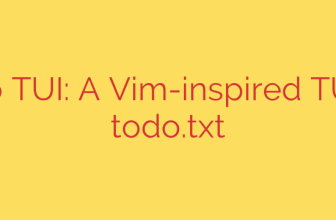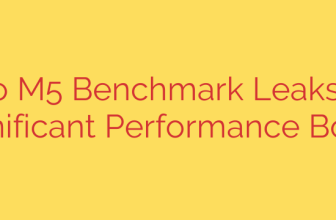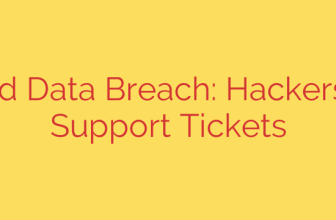
Master Your Linux Media: A Guide to the Best Free MPRIS Control Tools
Managing media playback on Linux can sometimes feel disjointed. You might have a desktop music player, a streaming service in your browser, and a video player all running at once. Fortunately, a powerful standard called the Media Player Remote Interfacing Specification (MPRIS) creates a unified way to control them all. This protocol allows applications to communicate with and manage any compatible media player, opening the door for incredible customization and convenience.
Whether you’re a command-line enthusiast, a desktop customizer, or someone who just wants their media keys to work everywhere, there’s a free and open-source MPRIS tool built for you. Here’s a look at some of the best tools available to streamline your media control on Linux.
Command-Line Mastery for Power Users
For those who live in the terminal, command-line MPRIS tools offer unparalleled power for scripting, creating custom keybindings, and integrating media control into complex workflows.
Playerctl
Playerctl is arguably the most popular and versatile command-line tool for MPRIS control. It’s a robust utility that provides simple, intuitive commands to manage playback, query metadata, and more.
- Key Features:
- Simple, intuitive commands like
playerctl play-pause,next,previous, andstop. - Retrieve detailed metadata, including the current track title, artist, album, and even the album art URL.
- Control specific players or all active players at once.
- Highly scriptable, making it perfect for binding media controls to keyboard shortcuts in window managers like i3 or Sway, or for use in custom scripts.
- Simple, intuitive commands like
Actionable Tip: You can create a simple script to display the currently playing song in your status bar by combining playerctl with a loop. For example: while true; do playerctl metadata --format '{{artist}} - {{title}}'; sleep 1; done.
Seamless Desktop and GUI Integration
If you prefer a visual approach, several graphical tools and desktop widgets leverage MPRIS to give you point-and-click control over your media.
MPRIS Indicator Menu
For users of GNOME and other desktop environments that support indicator applets, the MPRIS Indicator Menu is an essential tool. It places a convenient icon in your top panel that provides instant access to your media players.
- Key Features:
- A clean, accessible dropdown menu in your system tray or panel for playback control.
- Displays the current track information and album art.
- Automatically detects and lists all running MPRIS-compatible players, allowing you to switch between them effortlessly.
- Lightweight and unobtrusive, providing control without getting in your way.
Plasma Browser Integration (KDE)
For KDE Plasma users, this official extension is a game-changer. It bridges the gap between media playing in your web browser (like YouTube, Spotify Web Player, or Bandcamp) and the native Plasma desktop.
- Key Features:
- Integrates browser media directly into Plasma’s media controls, including the system tray widget and lock screen.
- Allows hardware media keys (play/pause, next, previous) on your keyboard to control browser-based players.
- Displays desktop notifications for track changes.
- Can mute all other media when one player starts, preventing sound conflicts.
Bridging Devices and Specialized Services
MPRIS isn’t just for local control. Some of the most powerful tools use it to connect your Linux desktop to other devices or specialized audio services.
KDE Connect (and GSConnect for GNOME)
KDE Connect is a powerful suite of tools for integrating your Android phone with your Linux desktop, and its media control feature is a standout. GSConnect provides the same functionality for the GNOME desktop.
- Key Features:
- Control media playback on your desktop directly from your phone. This is perfect for when you’re away from your desk but still within earshot.
- Automatically pauses music or videos on your computer when you receive a phone call.
- Syncs volume control between your phone and desktop.
- Part of a larger ecosystem for sharing files, notifications, and clipboard content.
MPRIS-Proxy
If you’re a power user who frequently runs multiple media applications at the same time, you may have run into conflicts. The MPRIS-Proxy is a utility designed to solve this problem by managing multiple players intelligently.
- Key Features:
- Presents multiple media players as a single MPRIS interface to control applications.
- Prevents control commands from being sent to the wrong player.
- Ideal for complex audio setups where you need to ensure only one media source is active at a time.
How to Choose the Right MPRIS Tool
- For Terminal Enthusiasts and Scripters: Playerctl is the undisputed champion. Its flexibility is unmatched for building custom solutions.
- For a Simple Desktop Widget: MPRIS Indicator Menu is a perfect choice for GNOME users who want a simple, visual way to manage playback.
- For KDE Plasma Users: Plasma Browser Integration is a must-have for unifying control over web and desktop media.
- For Integrating Your Phone and PC: KDE Connect or GSConnect offers the best experience for controlling your desktop media from your Android device.
By leveraging the power of MPRIS, you can create a more cohesive, convenient, and powerful media experience on your Linux system. Explore these free and open-source tools to find the perfect fit for your workflow and take full control of your audio and video playback.
Source: https://www.linuxlinks.com/best-free-open-source-linux-mpris-tools/








